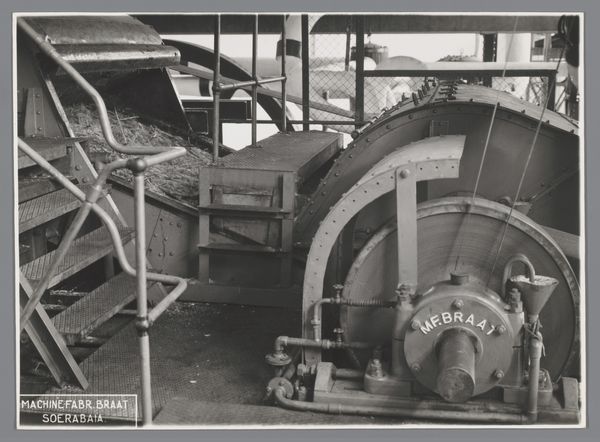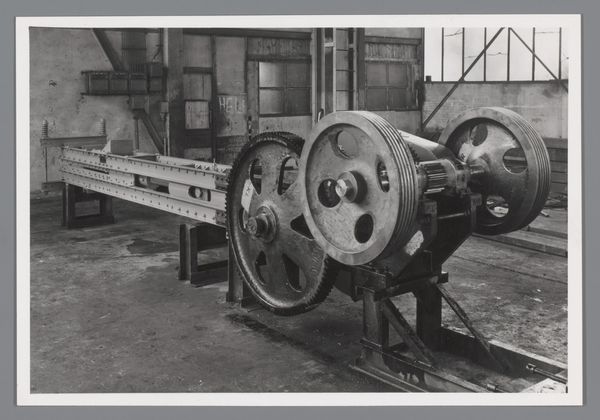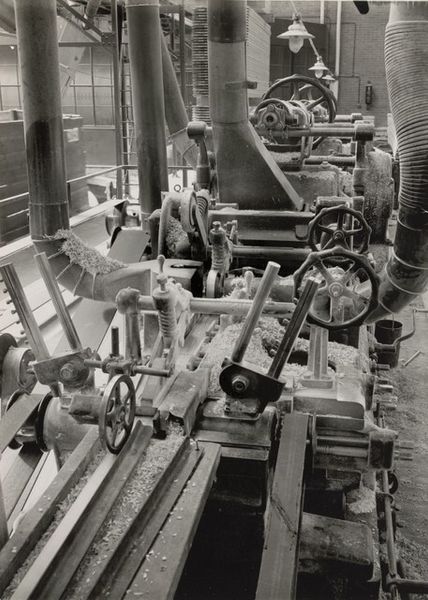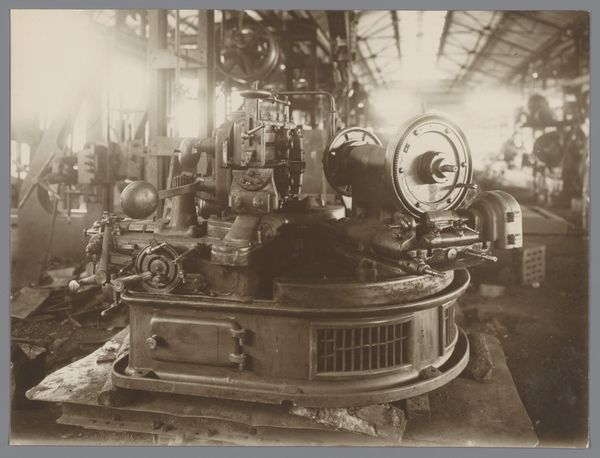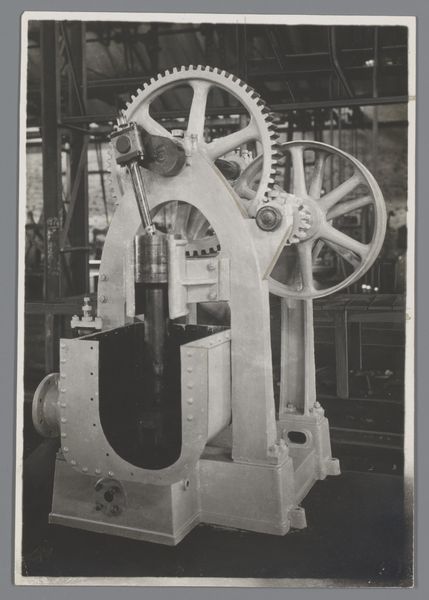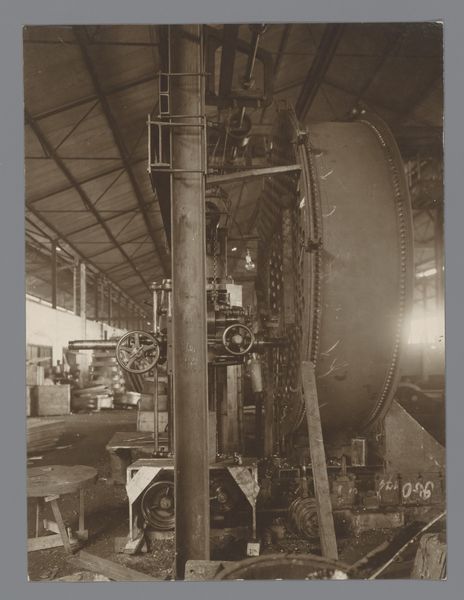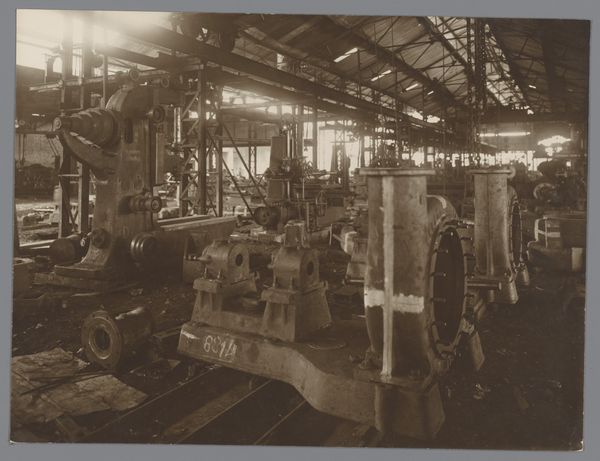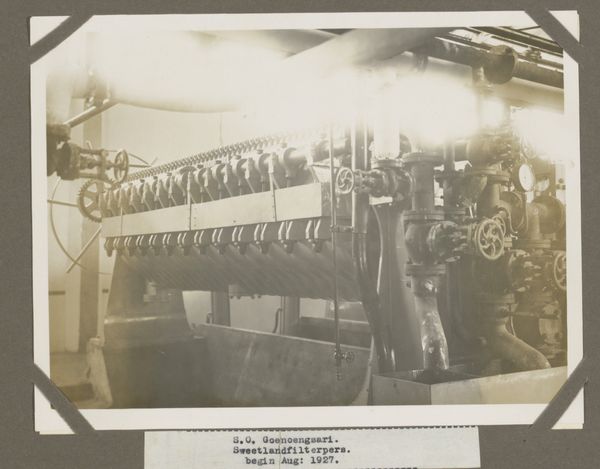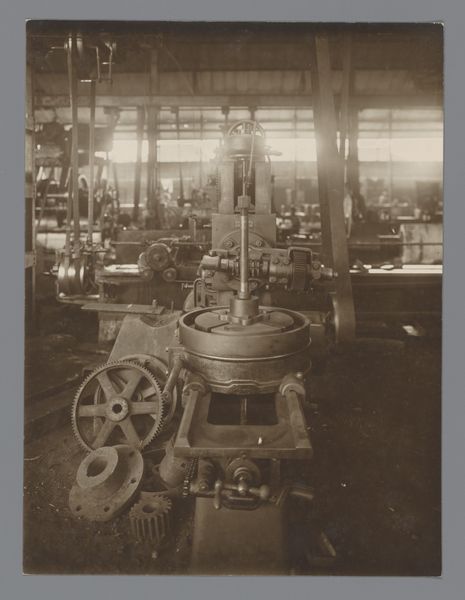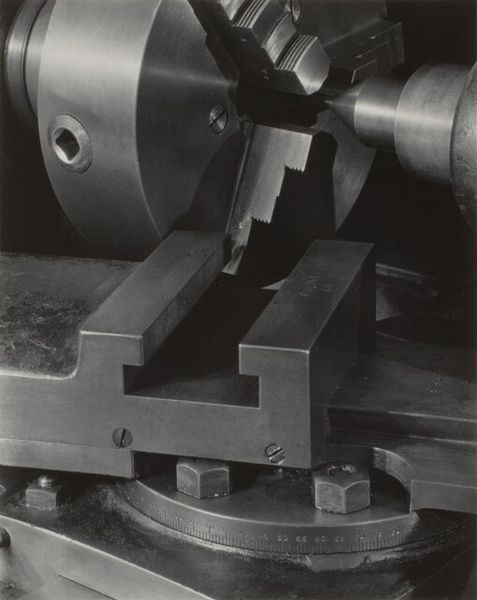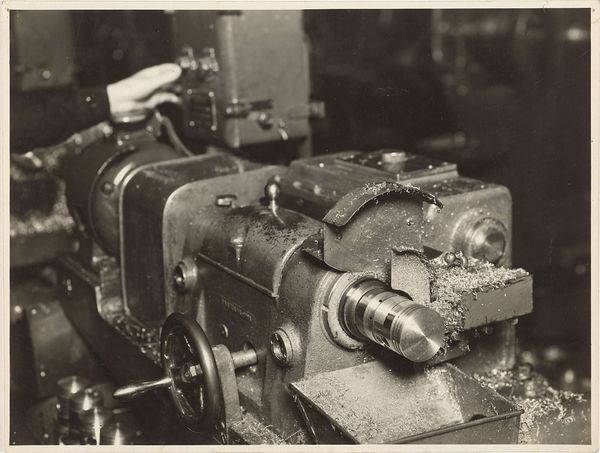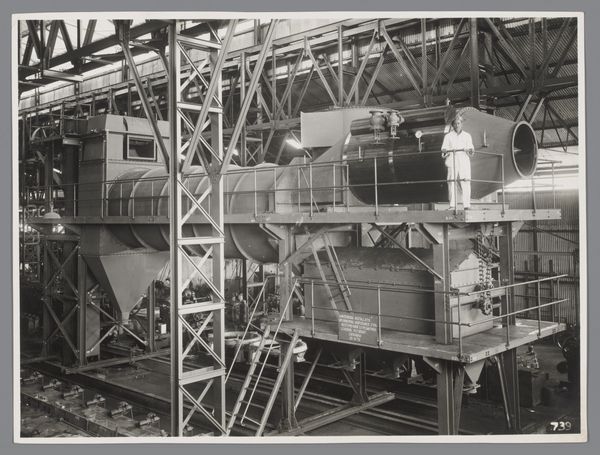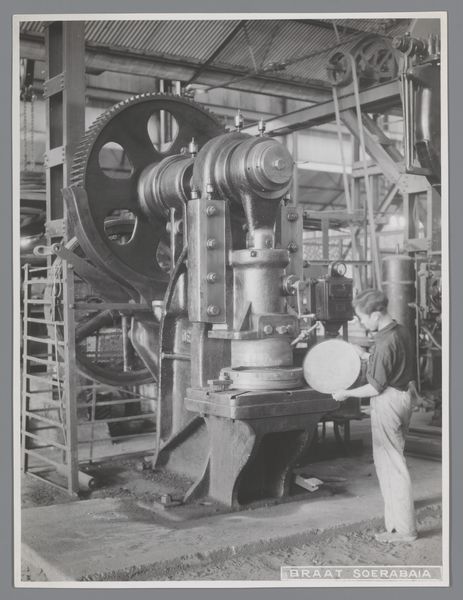
photography
#
photography
#
geometric
#
monochrome photography
#
modernism
#
realism
#
monochrome
Dimensions: image: 23.9 x 18.2 cm (9 7/16 x 7 3/16 in.) sheet: 24.1 x 18.5 cm (9 1/2 x 7 5/16 in.)
Copyright: National Gallery of Art: CC0 1.0
Curator: Well, look at this Robert Frank photograph, “Machine—Design,” dating from about 1941. What’s your initial take? Editor: It looks like the inside of a very organized, but deeply melancholic robot. So much precision and intentionality caught in stillness. Almost heartbreaking, like it's longing for purpose. Curator: Yes, there’s a sense of industrial nostalgia hanging in the air, isn't there? The image seems caught between Modernism's faith in technology and a creeping sense of its potential dangers that grew up during and after the Second World War. Editor: Absolutely. And Frank's use of monochrome just amplifies that feeling. No escaping the harshness or the weight of these gears and pipes. Makes me wonder if he saw a beauty in its stark geometry, or was he simply documenting the cold efficiency of industry? Curator: The title suggests an appreciation, perhaps even awe, at the design, a purely formal study of machinery and mass production as aesthetically important and essential. In a way it romanticizes that kind of engineering… Editor: I get it. But even then, looking at it now, it just feels...heavy. Like the physical manifestation of work, or relentless progress, which in its own way has a melancholy quality. Almost dystopian, really. Do you think Frank anticipated that interpretation? Curator: Possibly. Photography, especially then, was often employed to celebrate the rise of technology and industry. Frank might have been subtly undermining this perspective by highlighting the imposing, almost dehumanizing aspects of these massive machines. And certainly Frank’s style as evidenced later, especially with "The Americans," speaks to this viewpoint. Editor: I hadn't thought about it that way. It shifts things entirely. So, instead of marveling, we're being asked to pause, to question… fascinating. This somber hunk of metal is actually making me feel strangely contemplative. Curator: And that's what makes it compelling art. A snapshot of industrial architecture, inviting us to ponder technology and its evolving role in our society. Thanks for your insights. Editor: Anytime. And thank you. I think I might carry this somber, mechanical companion around with me for a little while.
Comments
No comments
Be the first to comment and join the conversation on the ultimate creative platform.
